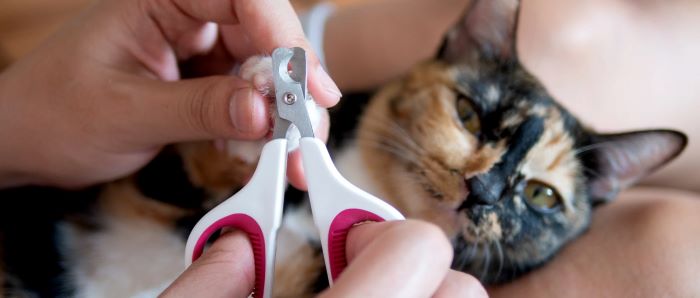As part of a routine grooming program, you should perform a nail trim on your cat, every 2 to 3 weeks. The procedure itself is easy, assuming you have the right equipment and that your pet agrees to cooperate. If your pet refuses to hold still for its manicure, let a veterinary assistant perform the deed. It will be less stressful on both you and your pet.
There are many types and styles of nail trimmers on the market today. The preferred choice is the guillotine-type nail trimmers with replaceable blades. These are available at pet stores everywhere.
The procedure itself is simple on clear nails. Observe the nail to be clipped and identify the endpoint of the blood supply, or the quick. Then, staying just in front of the quick, snip off the end portion of the nail.
On dark nails that don’t have readily identifiable quicks, start snipping back the end of the nail in small portions at a time. Stop when the nail is short enough as to not contact the ground when weight is placed on the paw.
Invariably, the time might come when you accidentally “quick” your pet’s nail, causing it to bleed. If this occurs, there is no cause for panic. Using a clean cloth or gauze pad, apply direct pressure to the bleeding nail for 5 minutes to stop the bleeding.
Alternatively, you can apply clotting powder or clotting sticks, both of which can be purchased at pet stores, to the end of the affected nail to quickly stop the bleeding. If none of these are handy, ordinary flour can be used as an effective substitute.




